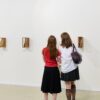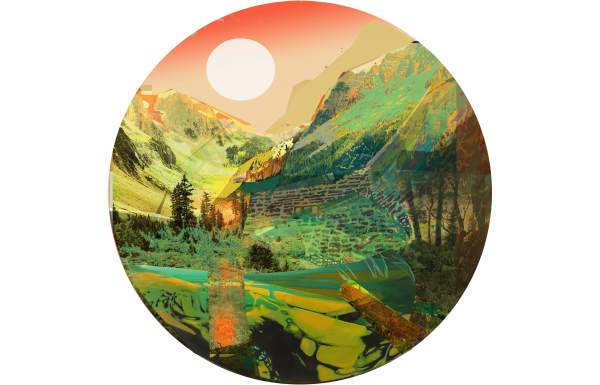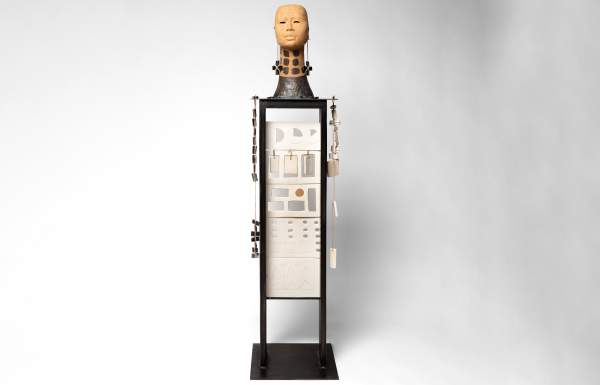NEW MEXICO ART watchers already know Eliza Naranjo Morse, Nikesha Breeze, Rose B. Simpson, Szu-Han Ho, and Jennifer Nehrbass. Now, thanks to the National Museum of Women in the Arts (NMWA), the rest of the country is getting to know a little more about them too.
The New Mexico artists were among those nominated from around the world as NMWA Women to Watch. Naranjo Morse is featured along with 27 others in New Worlds: Women to Watch 2024, a triennial exhibition on view at the Washington, D.C., museum through August 11. “These five artists engage in how societal conditions have impacted artists’ visions for the future or inspired them to create alternative current realities,” says curator Nancy Zastudil, who was invited to select the artists from New Mexico. Zastudil has brought together works by all five artists for a complementary exhibition, New Worlds: New Mexico Women to Watch 2024, at 516 Arts in Albuquerque, opening June 22.
From jewel-toned cairns of carved wood and stone to luminous paintings that combine realism and abstraction with ancient and contemporary elements, Nehrbass’s work incorporates landscapes, including the topography of the body, to create a sense of distance and familiarity in her work.
A performance, sound, and installation artist, Ho often works collaboratively, embracing themes of social and climate justice.
Naranjo Morse (Santa Clara Pueblo) creates sculptures and illustrations that explore current events and personal and communal experiences. She draws from the cultural knowledge of her Pueblo elders and her community gathered at “Indigenous-led meetings, classrooms, kitchen tables, fields, and institutions,” she says. “My illustrations make note of the guidance developed and carried forward by people clearing a path to a new world, through loving and listening to the one we have.”
In her mural for the Washington exhibition, for instance, Naranjo Morse illustrates beings who journey from different directions toward a shared center. “They are carrying bundles of knowledge and tools that have been passed down, prayed over, skillfully developed, and carefully maintained,” she says.
Themes of ancestral or communal knowledge intertwined with personal narratives are also present in the works of Breeze and Simpson. Breeze uses installation art, performance, film, painting, textiles, and sculpture to express the reclamation of Black histories, family histories, and the African diaspora.
Simpson (Santa Clara Pueblo) works in ceramic sculpture, metals, fashion, performance, music, and writing to translate the experience of contemporary Indigeneity through the adaptation of ancestral knowledge, allowing the past to speak through the present. New Worlds is the first exhibition to feature Simpson’s writing, which has also appeared in this magazine.
“The works on view at 516 Arts, vastly different in styles and approaches, assemble multiple perspectives on that which is perhaps just out of view but certainly within reach,” says Zastudil, “a future informed by ancestral knowledge and visionary thinking.”
This post was originally published on this site be sure to check out more of their content









